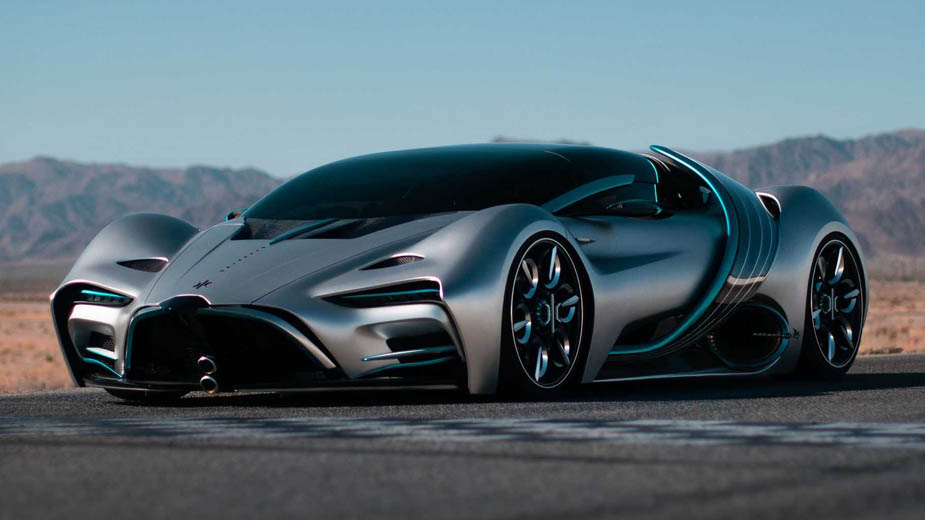YOUNGSTOWN, Ohio – The future of the United States’ commercial and industrial competitiveness on a global scale rests with innovation, said an official from the Department of Energy, and among the key areas within that sphere is energy storage.
“We’re never going to have the cheapest labor because of our skilled workforce. We’ll always have strong environmental protections,” said Alex Fitzsimmons, deputy assistant secretary in the Office of Energy Efficiency and Renewable Energy. “But the thing we can win on is technological innovation. We have to innovate faster than they can copy.”
As the keynote speaker Oct. 14 at Brite Energy Innovators’ Ohio Next Energy Summit, Fitzsimmons said incubators like the one in downtown Warren are crucial to developing the companies and communities that will drive that innovation. Beyond just giving companies a space to develop and test their technologies and connect the entrepreneurs with funding sources, Brite works with them to commercialize their products.
Fitzsimmons’ office oversees a portfolio of $1.1 billion in projects that are directed at improving manufacturing competitiveness, the energy efficiency of buildings and improving efficiency in batteries.
“We have to do all the early-stage research and development. But we also have to commercialize and demonstrate technology. That’s where groups like Brite can play a vital role,” Fitzsimmons said.
Also playing an important role is its focus beyond technologies used in lithium-ion batteries. Among the businesses working with Brite are Hyperion Motors, which is developing a car powered by hydrogen fuel cells; Nodis, a Columbus-based company making smart glass; and Brilliency, a utilities management software platform. The fourth company to present at the virtual summit was Li-Ion Tamer, a safety program for lithium-ion batteries.
“The big challenge moving forward because of this rapidly evolving system … is less about having affordable kilowatt hours and more about integrating new technologies in a way that maintains this reliable, affordable, resilient and clean energy system,” Fitzsimmons said. “Lithium-ion batteries are great for electric vehicles. But they’re not great if you have an electric grid with high penetrations of wind and solar. You need longer forms of storage, which could be anything from new battery chemistries to energy storage technologies that go beyond batteries.”
Among the benefits of Hyperion’s hydrogen cells, CEO Angelo Kafantaris said, are durability and lifespan. The cells used in his company’s vehicle are better able to withstand extreme temperatures and can last up to 2.5 times longer than usual automotive battery cells.
With its smart glass technology, Nodis is able to reduce the carbon emissions of buildings and lower their electricity demand. Through nanoparticles printed onto a film that’s laminated through glass, Nodis’ TruTint panels can be adjusted to limit the amount of light, color or infrared wavelengths coming through the window. Extra heat from the windows can also be dissipated to fuel cells which reduce electricity consumption.
“You know how the [blinds] can be turned to control how much light can come in? We do exactly the same thing, but with nanoparticles that are one micron long and rotate them when voltage is applied,” said founding and managing partner Mike Holt. “We can see how much energy is being saved based on natural light and using infrared.”
Following the presentations by the four companies, a panel discussed what that future could include and some of the barriers.
“It’s about the convergence of technologies. It’s not always anything new and fancy, but there are uses and technologies coming together that make me super interested,” said Dominion Energy’s Nick Pero.
Added Holt, who’s also principal at capital firm Get2Volume, “It may be the same way connectivity innovated the computer world, where as soon as they were connected everything started changing. You’ll see the same in energy. You may see smart grid technologies leading to better power management and dynamic response. This connectivity provides innovation in our ability to manage energy.”
At NASA, iTech program executive Max Briggs says that while the space agency has long leaned on solar power, it’s looking to new sources. In March 2018, the agency ran its first test of the Kilopower nuclear fission power system. Such power is likely going to be the energy system for missions to the Moon or Mars, he said.
“Solar is still the go-to power source for NASA, but it’s exciting that we have competitors, especially in missions that are ambitious where solar wouldn’t work,” he said. “There are missions to places like Europa [a moon of Jupiter] where we’ll have to dig through a mile of ice to see what’s underneath. You can’t bring solar panels with that. So technologies that bring large-scale power to missions are the best thing NASA has going for it.”
There are challenges like adoption – where demonstration and commercialization of products can help solve the problem – and regulations that vary by country, state and even municipality, as Pero and Holt noted.
But the biggest barrier facing the development of energy systems is the limits of physics. There’s only so much energy and efficiency you can squeeze out of things like batteries. That limit hasn’t been hit yet, Briggs said, and research is finding new solutions that pushes the boundaries.
Pictured: The Hyperion Motors XP1 car is powered by hydrogen fuel cells. The company, which has an office at Brite Energy Innovators, was among the presenters Oct. 14 at the incubator’s Ohio Next Energy Summit.
